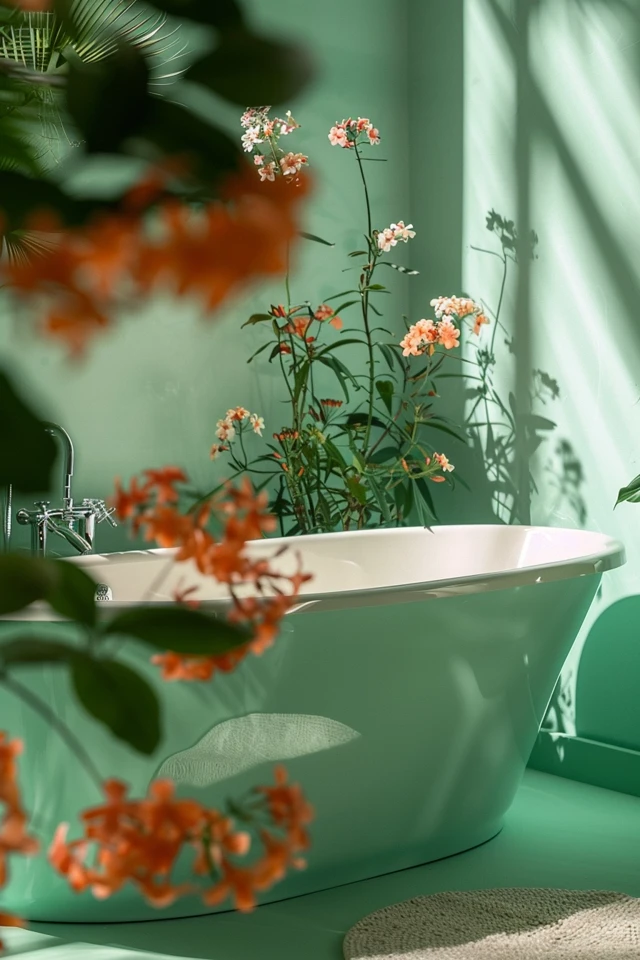When working with a small bathroom, finding the right bathtub can be a challenge. However, with the right planning and knowledge, you can optimize the available space and fit a bathtub that suits your needs. There are various ideas and options to consider, from the size of the bathtub to the layout of the bathroom. By following space-saving solutions and considering the dimensions and materials of the bathtub, you can create a comfortable and stylish bathroom even in a small space.
Key Takeaways:
- Maximizing space is crucial when fitting a bathtub in a small bathroom.
- Consider the dimensions and materials of the bathtub to find the right fit.
- Explore space-saving solutions such as corner tubs or pedestal tubs.
- Proper installation is essential to prevent structural or plumbing issues.
- Choose a bathtub material that suits your style and maintenance preferences.
Factors to Consider When Choosing a Bathtub for a Small Bathroom
When fitting a bathtub in a small bathroom, maximizing the available space is crucial. The right bathtub should fit well within the dimensions of the room and provide a comfortable bathing experience. Consider the length, width, and depth of the bathtub to ensure it is suitable for your small bathroom.

Space-saving solutions:
One option is to choose a corner bathtub that utilizes the unused corners of the bathroom. These tubs are designed to fit snugly in the corner, allowing you to maximize the space in your small bathroom.
Another space-saving solution is a pedestal tub. These freestanding tubs sit on a pedestal base, creating an open and airy feel in the bathroom. They also take up less visual space compared to traditional built-in bathtubs.
Proper installation of the bathtub is essential to avoid any structural or plumbing issues. Make sure the bathtub fits securely in the allocated space and consult a professional if needed. By considering these factors, you can find a bathtub that maximizes space and enhances the functionality of your small bathroom.
Types of Bathtub Materials and Their Pros and Cons
When fitting a bathtub in a small bathroom, it’s crucial to consider the material of the bathtub. There are several common materials available, each with its own set of advantages and disadvantages.
1. Porcelain-enameled steel
Pros: Affordable, durable, easy to clean
Cons: Prone to chipping and scratching
2. Ceramic
Pros: Heat and stain-resistant, durable
Cons: Relatively expensive, can be heavy
3. Acrylic
Pros: Lightweight, affordable, versatile in shapes and sizes
Cons: Less durable compared to other materials
4. Stone Resin
Pros: Luxurious appearance, excellent heat retention
Cons: More expensive, requires regular maintenance

5. Cast Iron
Pros: Excellent heat retention, durable
Cons: Heavy, costly, may require additional support
6. Copper
Pros: Unique appearance, good heat retention
Cons: Expensive, requires regular maintenance
7. Marble
Pros: Elegant and luxurious appearance
Cons: High maintenance, easily stained or scratched
8. Wood
Pros: Warm and natural aesthetic
Cons: High maintenance, may not withstand moisture well
The choice of bathtub material depends on personal preferences, budget, and the desired aesthetic for the small bathroom. It’s also important to consider the weight and dimensions of the bathtub to ensure it can fit well in a tight space.
“The right choice of bathtub material can greatly enhance the overall look and feel of a small bathroom.” –

Conclusion
Fitting a bathtub in a small bathroom requires careful planning and consideration of various factors. To optimize space in your bathroom, start by maximizing the available space. Choose a bathtub size and shape that fits well within the dimensions of your bathroom, ensuring there is enough room for movement and other fixtures. Additionally, selecting the appropriate material for your bathtub is crucial in terms of durability, maintenance, and aesthetics.
When designing your small bathroom with a bathtub, remember to take into account the layout and plumbing needs. Consider the placement of the bathtub in relation to other fixtures and ensure proper installation to avoid any structural or plumbing issues. It’s also important to consider any specific requirements you may have, such as accessible features, to make your bathroom more functional and user-friendly.
By following these guidelines and implementing smart design choices, you can create a functional and stylish small bathroom with a bathtub. Don’t let the limited space hold you back from enjoying the luxury and comfort of a bathtub. With careful planning and attention to detail, you can create a beautiful bathroom that meets all your needs, even in a small space.

